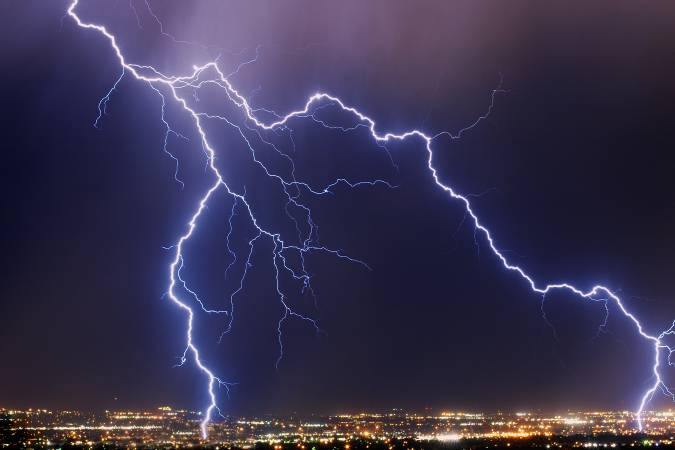Over 14 m strikes detected in Sri Lanka in 2020 by Earth Networks Total Lightning Network
Highest number of lightning strikes in Uva, North Central, Eastern, Sabaragamuwa, and North Western Province
Earth Networks, operator of a nationwide lightning detection network in Sri Lanka, released its first ever 2020 South Asia Lightning Report today, covering India, Bangladesh, and Sri Lanka.
For all of 2020, there were 14,462,297 lightning strikes in Sri Lanka recorded by Earth Networks’ Total Lightning Network, 572,729 of which were dangerous cloud-to ground strikes. The top five provinces with the most lightning strikes in 2020 were Uva, North Central, Eastern, Sabaragamuwa, and North Western Province.
In 2020, Sri Lanka saw the highest concentration of lightning in April of 2020. There were 1,835 Dangerous Thunderstorm Alerts issued in Siri Lanka in 2020, correlating with the large volume of lightning strikes recorded.
Sri Lanka is an island country in the Indian Ocean near the equator, causing it to experience extreme amounts of heat and moisture. As a result, the population of Sri Lanka is highly vulnerable to severe weather and the effects of lightning strikes.
With Earth Networks’ presence in Sri Lanka comes real-time lightning detection, alerting, and storm-tracking technology needed to minimise lightning-related deaths, injuries, and property damage. These weather safety awareness and lightning warning tools help build resilience and reduce risk for those exposed to severe weather.
Building resilience to severe weather
It is Earth Networks’ mission to enable a safer, more prosperous world through the dissemination of early warning for natural disasters such as thunderstorms, flooding, and severe storms. The company offers comprehensive visualisation and alerting tools such as automatic warnings and estimated time of arrival for dangerous storms to help save lives and reduce property damage. Currently, Earth Networks works with various central and state agencies, universities, and private industry sectors in the region.
Earth Networks’ partnership with Dialog, Sri Lanka’s leading mobile network operator, has enabled the rapid growth of the nationwide lightning detection network. Earth Networks also provides information about severe weather, weather forecasts, and historical data to better prepare the population of Sri Lanka for weather-related events.
Government agencies that benefit from Earth Networks Total Lightning Network include disaster management and emergency management agencies in the region. Commercial industries that benefit from the Total Lightning Network include aviation, shipping, agriculture, fisheries, and tourism.
“The expansion of the Earth Networks Total Lightning Network in Sri Lanka results in more accurate data collection and severe weather predictions,” said Earth Networks Regional Manager of Asia Kumar Margasahayam. “Making sure that the population is not only aware of the consequences of severe weather events, but also being notified before it happens, is crucial to keeping people and communities safe.”
With climate change and rising temperatures, the incidence of severe thunderstorms will only increase. Effective early warning systems coupled with effective action plans to save lives is key to keeping communities safe. Action plans need to consider the dissemination of alerts in a timely manner and ensure that everyone is receiving them. One of the most important roles that disaster management agencies and NGOs can play is in imparting education to even the most remote villages, so people understand what actions need to be taken when they receive alerts or warnings.
Earth Networks Total Lightning Network is the most extensive and technologically advanced lightning network in the world. Its ability to monitor both cloud-to-ground and in-cloud lightning in near real time enables faster localised storm alerts which include location, coverage, intensity, trends, and warnings of other forms of severe weather.
Earth Networks is proud of its association and support of various State disaster management authorities in the region and is looking forward to partnering with many more to help save more lives and reduce damages caused due to severe weather events.
(FT)

